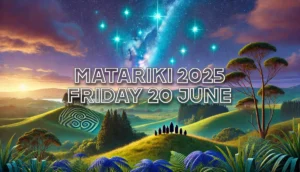The Role of Whakapapa in Māori Culture and Matariki Celebrations
Whakapapa is a fundamental concept in Māori culture, referring to genealogy, ancestry, and lineage. It is deeply rooted in the Māori worldview and plays a significant role in Matariki celebrations. This paper will explore the meaning and importance of whakapapa in Māori culture, its role in Matariki celebrations, and the ways in which it is practiced and passed down through generations.
What is Whakapapa?
Whakapapa refers to the Māori concept of genealogy, tracing the descent of individuals and groups back to their ancestors. It encompasses not only biological ancestry but also cultural, spiritual, and ecological connections. Whakapapa is often depicted visually in the form of a family tree, or whakapapa chart, which shows the connections between ancestors and descendants.
Whakapapa Chart
A whakapapa chart is a visual representation of a Māori person’s genealogy or family tree. It is an important part of Māori culture and identity, as it reflects the connections and relationships between ancestors, descendants, and the natural world.
To create a whakapapa chart, you will need to gather information about your family tree and organize it in a visual format. Here are some steps to help you create a whakapapa chart:
- Start with yourself: Begin by placing yourself at the bottom of the chart, as the most recent descendant.
- Work backwards: From yourself, work backwards to your parents, grandparents, great-grandparents, and so on. Include as much information as you can about each person, such as their name, birthplace, and date of birth.
- Include both sides of the family: Make sure to include both your mother’s and father’s sides of the family on the chart.
- Use symbols and colors: Use symbols and colors to represent different information on the chart. For example, you can use different symbols to indicate gender, or use different colors to represent different branches of the family.
- Add photos and stories: Consider adding photos and stories to the chart to bring it to life and make it more meaningful.
Remember, creating a whakapapa chart is a personal and cultural journey, so take your time and enjoy the process of learning about your family and your heritage.
Importance of Whakapapa in Māori Culture
Whakapapa is central to Māori identity, providing a sense of connection to the past, present, and future. It is a way of understanding one’s place in the world and the relationships between people, places, and things. Whakapapa also serves as a framework for Māori customs, traditions, and practices, providing a sense of continuity and cultural preservation.
Role of Whakapapa in Matariki Celebrations
Whakapapa plays a significant role in Matariki celebrations, as it provides a context for honoring ancestors and acknowledging the connections between past, present, and future. During Matariki, whakapapa charts and stories are often shared, highlighting the significance of particular ancestors and their contributions to the community. Matariki also provides an opportunity for whānau (extended family) to come together and share their whakapapa, strengthening family ties and community connections.
Practicing Whakapapa
Whakapapa is practiced in various ways, including through the sharing of stories, the creation of whakapapa charts, and the use of naming conventions. In traditional Māori society, whakapapa was primarily transmitted orally, with knowledge passed down through the generations by the elders of the community. Today, whakapapa is still practiced in this way, but it is also documented and recorded for future generations.
Passing Down Whakapapa
Passing down whakapapa is an important aspect of Māori culture, ensuring that knowledge of ancestry and lineage is preserved and passed on to future generations. In many Māori families, children are given Māori names that reflect their whakapapa and ancestral connections. This serves as a way of honoring ancestors and maintaining cultural traditions.
Whakapapa and Environmental Stewardship
Whakapapa is not only about genealogy but also encompasses a wider understanding of the connections between people and the environment. The Māori worldview recognizes the interconnectedness of all things, including the natural environment. As such, whakapapa is also linked to the concept of kaitiakitanga (guardianship), which refers to the responsibility of caring for and protecting the environment for future generations.
Whakapapa in Māori Culture
Whakapapa is a foundational concept in Māori culture, providing a sense of connection to the past, present, and future. It is deeply intertwined with Matariki celebrations, providing a context for honoring ancestors and acknowledging the connections between past, present, and future. Whakapapa is practiced and passed down through the generations, ensuring that knowledge of ancestry and lineage is preserved and maintained. It also encompasses a wider understanding of the connections between people and the environment, emphasizing the importance of environmental stewardship and kaitiakitanga.


